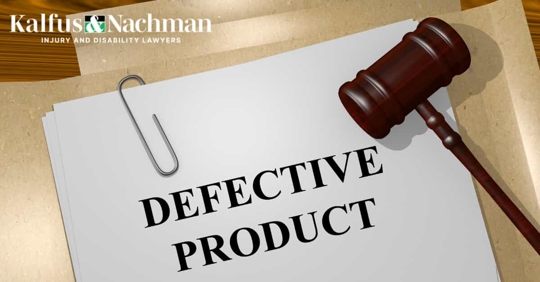When it comes to personal injury cases, product liability claims can be particularly complex. Understanding the elements of a product liability claim is crucial for anyone who has suffered injuries due to a defective product. In this blog, we will delve into the key components of a product liability claim, providing you with actionable tips to navigate through this challenging legal process.
1. Existence of a Defective Product
The first and foremost element in any product liability claim is the presence of a defective product. Defects can take several forms:
Design Defects: These occur when there's a flaw in the product's original design, making it inherently dangerous even if manufactured perfectly.
Manufacturing Defects: These defects occur during the manufacturing or assembly process, resulting in individual products that are different from the intended design and are therefore unsafe.
Marketing or Labeling Defects: These involve inadequate warnings, instructions, or misleading marketing that fails to inform consumers about potential risks associated with the product's use.
2. Injury or Damage
To pursue a product liability claim, the plaintiff must demonstrate that they suffered an injury or sustained damage as a result of using the defective product. Injuries can range from physical harm, such as burns or lacerations, to more long-term health issues caused by exposure to dangerous substances.
3. Proximate Cause
The plaintiff must establish a causal link between the defective product and their injury or damage. In other words, they must show that the product's defect directly led to the harm they suffered. If the injury resulted from other factors unrelated to the product's defect, the claim may not hold.
4. Breach of Warranty or Negligence
Depending on the jurisdiction and the specifics of the case, a product liability claim may be based on one of the following legal theories:
Breach of Warranty: This involves the violation of a product warranty, which can be expressed (stated explicitly) or implied (assumed by law). A breach of warranty claim asserts that the product did not meet the standards promised to the consumer.
Negligence: In some cases, product liability claims may be based on negligence, where the manufacturer, distributor, or seller failed to exercise reasonable care in the design, production, or marketing of the product.
5. Product's Intended Use
The plaintiff must have used the product in a manner consistent with its intended use or foreseeable misuse. If the injury occurred because the plaintiff used the product in an unintended or unforeseeable way, the claim may be challenged.
6. Product's Condition
In most cases, the product must be in substantially the same condition as it was when it left the control of the manufacturer, distributor, or seller. Altering the product after purchase or using it in a way that significantly changes its condition may affect the viability of the claim.
7. Statute of Limitations
Product liability claims are subject to statutes of limitations, which vary by jurisdiction. These laws dictate the timeframe within which a claim must be filed. Failing to initiate legal action within the specified timeframe can result in the claim being barred.
Contact an Attorney Today
Navigating the complexities of a product liability claim can be overwhelming, but armed with the knowledge of its key elements, you can confidently pursue your case. Remember, seeking legal guidance from experienced personal injury attorneys like Kalfus & Nachman PC is essential to ensure your rights are protected throughout the process. Don't hesitate to reach out to us for a free consultation. Our team has a range of experience when it comes to defective products and will always go above and beyond to fight for your rights.
Click here to send us a message online or give us a call at (855) 880-8163.
